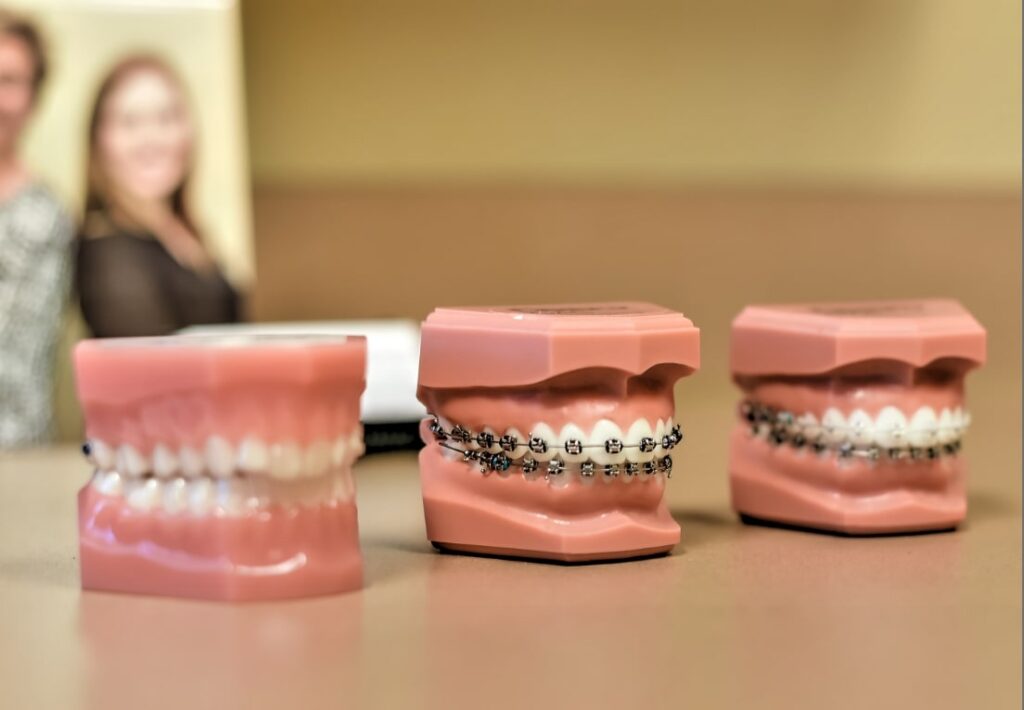Locating the Right Cumming Orthodontist for Your Braces and Aligners Demands
Locating the Right Cumming Orthodontist for Your Braces and Aligners Demands
Blog Article
Comprehensive Guide to Orthodontics Procedures for Dealing With Dental Imbalances
Understanding the complexities of each treatment, including their devices, benefits, and prospective downsides, is crucial in making notified choices concerning one's orthodontic therapy. As we navigate through the detailed overview to orthodontic treatments for correcting dental misalignments, the complex information of each approach will unfold, dropping light on the course towards a practical and unified oral placement.
Orthodontic Procedures Overview

In addition to typical braces and clear aligners, orthodontists might likewise recommend other interventions like headwear, palatal expanders, or retainers to address specific placement concerns (cumming invisalign). These treatments are tailored to each person's special requirements and may entail a combination of treatments to attain the preferred results. Normal modifications and monitoring are essential components of orthodontic therapy to guarantee progression gets on track and to make any essential adjustments in the process. By undertaking orthodontic procedures, people can not just achieve a straighter grin but additionally enhance their total oral wellness and function.
Typical Dental Braces: Exactly How They Work
When considering orthodontic therapies for oral imbalances, standard braces stand out as a time-tested method for dealing with teeth placing. Conventional braces are composed of brackets, wires, and bands that function with each other to use constant pressure on the teeth, gradually relocating them right into the wanted positioning.
One key aspect of exactly how typical braces work is the process of bone renovation. As stress is related to the teeth with the dental braces, the bone bordering the teeth is reshaped to support the new tooth settings. This renovation is essential for the lasting stability of the corrected positioning. Patients will certainly need routine changes at the orthodontist's office to ensure the braces remain to apply the proper pressure for efficient teeth movement.
Unnoticeable Aligners: Benefits And Drawbacks
These clear, tailor-made trays are essentially undetectable when put on, making them an appealing alternative for people looking for an extra cosmetically pleasing orthodontic therapy. Individuals can eliminate the aligners prior to eating or brushing their teeth, reducing the risk of food obtaining stuck in the device and simplifying the cleansing procedure.

Surgical Orthodontic Options
Surgical treatments in orthodontics present feasible alternatives for dealing with intricate dental misalignments that might not be effectively fixed via conventional orthodontic treatments. While typical braces and unnoticeable aligners can remedy several orthodontic issues, specific situations call for medical intervention to achieve ideal outcomes. Surgical orthodontic alternatives are typically recommended for serious malocclusions, substantial jaw disparities, and instances where the underlying bone structure needs modification to accomplish appropriate placement.
One usual medical orthodontic procedure is orthognathic surgery, which involves repositioning the jaws to fix practical problems such as problem chewing or speaking. This surgery is typically carried out in partnership with an orthodontist who helps line up the teeth before and after the procedure. Surgical orthodontics may also entail treatments to reveal affected teeth, eliminate excess gum tissue, or reshape the jawbone to develop an extra unified facial profile.
Before considering surgical orthodontic alternatives, people go through a detailed examination to figure out the necessity and potential advantages of such treatments. braces. While surgery might appear complicated, it can substantially enhance both the function and aesthetics of the smile in instances where standard orthodontic therapies fail
Retainers and Post-Treatment Treatment

Post-treatment care entails complying with the orthodontist's guidelines carefully. This may consist of proper dental hygiene methods, attending follow-up visits, and wearing the retainers as recommended. Failing to abide by post-treatment treatment instructions can cause relapse, where the teeth slowly relocate back towards their initial positions. Constant retainer wear, excellent oral health, and normal dental exams are important for keeping the results accomplished via orthodontic surgery and making sure the lasting stability of the remedied oral alignment.
Verdict
To conclude, orthodontic treatments supply various options for remedying oral imbalances. Standard dental braces make use of steel braces and cords to change teeth right into correct placement. Unseen aligners provide a more very discreet choice yet might not be ideal for all instances. Surgical orthodontic alternatives are readily available for more severe imbalances. Retainers are commonly made use of post-treatment to keep the brand-new placement. Generally, orthodontic treatments can successfully enhance dental health and visual look.
As we navigate through the comprehensive overview to orthodontic procedures for correcting oral misalignments, the intricate information of each technique will unravel, dropping light on the path towards a useful and aligners unified oral alignment. - cumming aligners
One of the most usual orthodontic treatments is the use of dental braces, which are composed of steel brackets and cords that use gentle pressure to progressively shift teeth into the preferred setting.When considering orthodontic therapies for oral imbalances, standard dental braces stand out as a tried and true technique for remedying teeth positioning. Furthermore, unnoticeable aligners might not be suitable for complicated orthodontic issues that need even more significant teeth activity, as they are generally advised for mild to moderate instances. Retainers are customized orthodontic tools designed to hold teeth in their remedied placements after the completion of orthodontic treatment.
Report this page